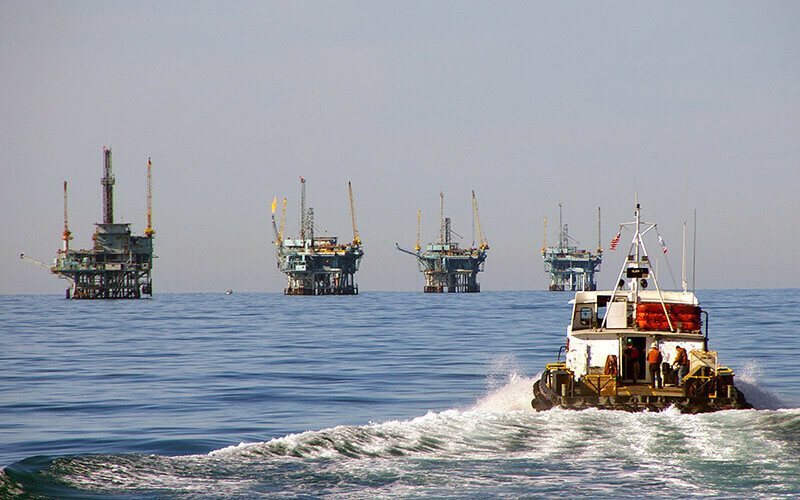Gulf of Mexico oil and gas operators are going all out in a resurgence that has continued to gain steam throughout the year.
Production is on track to exceed two million barrels per day (bbl/d) this year, after last hitting the two million milestone in August 2019, just prior to the Covid-induced shutdown. According to the latest numbers available, the U.S. Energy Information Administration (EIA) reported production in federal-controlled waters reaching just over 1.9 million bbl/d in July.
Increasing production has been a priority as fear that the Israeli-Hamas war could escalate across the Middle East and short-circuit global supplies, coupled with the ongoing Ukraine-Russia war, has some analysts predicting crude prices could in the not-so-distant future return to $100/bbl. Prices on the West Texas Intermediate (WTI) benchmark closed at $93.68 bbl on Sept. 27, before settling at $83.03 bbl on Oct. 24.
Kicking off 2023 production, Shell Offshore delivered first oil in February from its oft-delayed Vito field in Mississippi Canyon, which at its peak will produce around 100,000 barrels of oil equivalent per day (BOE/D) from four blocks in 4,000' of water. Among the Gulf’s most active operators, Shell took delivery of the Whale floating production unit (FPU) in mid-October, which replicates the Vito design and is likewise designed to produce up to 100,000 bbl/d, beginning in early 2024 in Alaminos Canyon.
Elsewhere, BP began first production from the Argos floating production system in April. Argos serves as the nucleus of the $9-billion Mad Dog 2 development that covers three Green Canyon blocks. The deepwater field will produce up to 140,000 bbl/d from 14 wells in roughly 4,500' of water.
Meanwhile, after averaging around 21 active rigs for much of the year, the Gulf saw 22 rigs drilling as of Oct. 20, according to Baker Hughes, most of these are engaged in development drilling on producing assets. Independent Kosmos Energy, however, is among the latest to prove that new oil is still being
found in the outer reaches of the Gulf. In October, Kosmos said its Tiberius exploration well in roughly 7,500' of water in Keathley Canyon Block 964, uncovered around 250' of net oil pay.
“The Gulf of Mexico is an advantaged basin with top quartile carbon emissions, and discoveries like Tiberius can bring lower-carbon U.S. supply to meet near-term growing oil demand,” CEO Andrew Inglis said of the discovery.
Drilling contractor Transocean Ltd. owns nine of the drillships currently working in the Gulf, with day rates averaging just over $464,000, according to the company’s Oct. 18 quarterly fleet status report. Transocean’s backlog now stands at approximately $9.4 billion.
Diamond Offshore Drilling Inc. is operating five drillships while Noble Corp. has four active floaters in the Gulf, according to the contractors’ latest fleet status reports.
“The fundamental setup for our industry is arguably the best that it has looked in the past 20 years based on a confluence of macro supply and demand factors,” Robert Eifler, Noble president and CEO, said earlier this year. “Leading indicators on offshore project sanctioning uniformly point to a sustained multiyear upturn in offshore investment and rig demand.”
Higher paydays and utilization rates have likewise extended to the latest generation platform and drilling support vessels (PSV/OSV). “Every region and every vessel class experienced a modest to quite significant day rate increase during the second quarter,” Tidewater Inc. President and CEO Quintin Kneen said in an Aug. 8 earnings call.
Earlier this summer, 320' PSVs up to 6,000 dwt were netting from $30,000 to $55,000/day on the Gulf of Mexico spot market, said S&P Global senior marine analyst Richard Sanchez, adding that the inventory of both suitable vessels and, more notably, the crews to man them remains tight. “There’s stiff competition for Jones Act-qualified mariners right now and I don’t think it’s going to abate. We’ve seen a big reshuffling where people with high skills can pick whatever they want from a range of jobs.”
All this comes as the industry has steadily criticized what it sees as a less-than-supportive stance by the Biden administration, particularly with respect to the Sept. 29 decision to authorize only three offshore lease offerings through 2029, which the National Ocean Industries Association (NOIA) decried as an “utter failure for the country.”
Nevertheless, the Bureau of Ocean Energy Management (BOEM) approved 41 new well drilling permits for waters deeper than 1,000' between Jan. 1 and Oct. 24, up from 32 new well authorizations for the same period in 2022.




